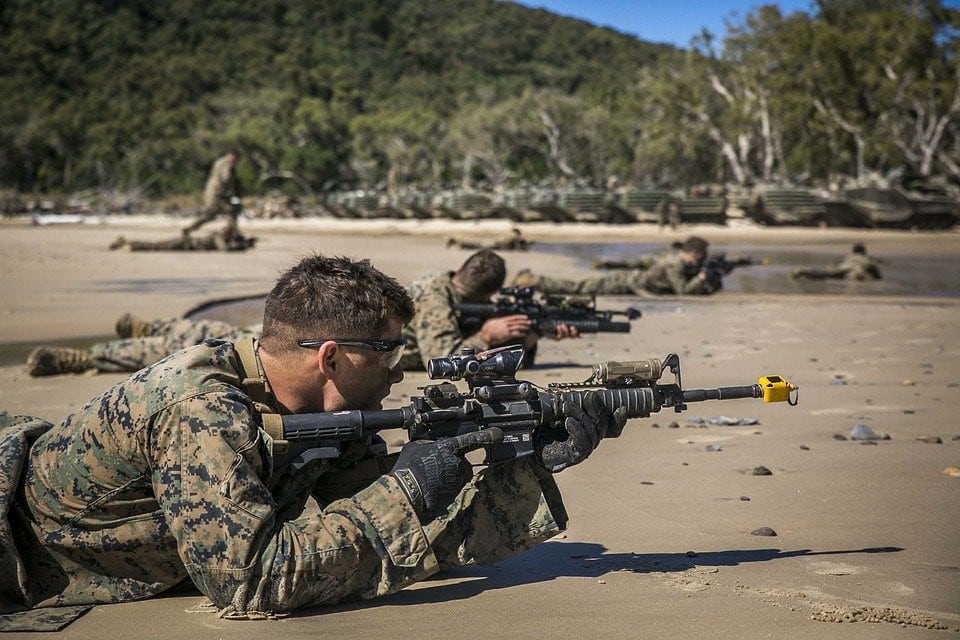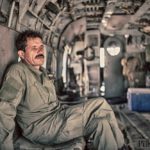The New Marine Corps Planning Guidance: Operational Art-Jackson Pollock Style!
by an anonymous former Special Forces officer

(Image credit: https://www.britannica.com/biography/Jackson-Pollock)
____________________
“Everything is very simple in war…but the simplest thing is difficult”
-Carl von Clausewitz Military Operational Art and its implementation in the development of campaign planning are essential to success in addressing the “wicked problems” that will define 21st Century conflict.
Over the last quarter-century, U.S. military forces have been continually engaged in combinations of combat, security, engagement, relief, and reconstruction in an era defined by “persistent conflict.” But as the United States military seeks to prepare itself for future battles, the return to “great power competition” has increasingly entered into the vernacular of strategists as we face ever-pervasive challenges from China and Russia. But much like walking backward down a winding road, it is difficult for U.S. military strategists to employ Operational Art to chart the optimal route forward. Unable to clearly “see” what lies ahead, U.S. military strategists can only discern the way forward while rapidly changing “events” unfold on the periphery.
Those events depict a volatile and complex world, which will require an appreciation for new and dynamic situations. It will require the application of Operational Art with ever-increasing creativity, innovation, and élan.
According to Joint Publication 3-0, Joint Operations, Operational Art is “the cognitive approach by commanders and staffs, supported by their skill, knowledge, experience, creativity, and judgment, to develop strategies, campaigns, and operations to organize and employ military forces by integrating ends, ways, and means.”
In other words, Operational Art is the means through which commanders connect tactical combat power to the achievement of national policy objectives. Most recently, the United States Marine Corps has undertaken a bold and provocative new application of Operational Art to address the complex nature of future conflicts it expects to face, as evidenced in the new Commandant’s Planning Guidance.
The new guidance outlined by General David Berger is a departure from more traditional “roles and missions” associated with the Marine Corps, one that envisions highly mobile, versatile Marine strike forces spread across a vast battlespace, working in close concert with the Joint Force to deny advisories freedom of action. The Commandant’s Planning Guidance is not without its critics, some arguing that such a drastic reshaping and unconventional approach is fraught with challenges, inherent risk and makes the Marine Corps less capable as the nation’s “911” force.
There are valid merits to some of those arguments. That said there is a certain “beautiful ugliness” in the application of Operational Art used in the formulation of the Commandant’s Planning Guidance, making it akin to a Jackson Pollock masterpiece. Like a Jackson Pollock painting, it is dramatic, perhaps visionary, it does not appeal to everyone but it does offer an Operational “art piece” that by its very postulation, bedevils our adversaries into considering the abstract. That in itself makes it invaluable.
For those who may be unfamiliar with Jackson Pollock, he was an American artist best known for his nonfigurative, expressionist art. Widely known for his technique of pouring or splashing liquid household paint onto a horizontal surface, his technique enabled him to view and paint his canvases from all different angles. It was also called “action painting” since Pollock utilized the force of his whole body to paint, often using a frenetic, freestyle to create his works of art. His extreme form of abstract painting was controversial to the art world, some critics praised the juxtaposition of style and colors of his creations, while others derided the randomness and frivolity of its effects.

Regardless of opinions, his art remains highly prized, one of Jackson Pollock’s paintings reportedly sold for $200 million US dollars in 2016 to a private collector. If we expand on the analogy further, “action painting” ala Jackson Pollock, is not dissimilar to what the Commandant’s Planning Guidance has embraced. It is novel, untested, and challenging and may very well be the one masterpiece of Operational Art everyone hates but wants to own.
Operational Art is a concept dealing with the direction of military forces, in conceiving and executing operations to attain strategic objectives. Operational Art forms a bridge between determining the political aims of a war (ends) and fighting the battles (ways and means.) It forms the basis on how to structure the problem set and how to achieve the objectives. The Commandant’s Planning Guidance application of Operational Art emphasizes creating agile leaders at all levels, capable of framing complex problems and acting decisively without extensive oversight.
It harkens back to the Cold War “Air-Land Battle” doctrinal concepts, where leaders expected to face a chaotic, high intensity, highly lethal battlefield, saturated with Warsaw Pact armor and combat aircraft, devoid of communications other than pre-established “mission type” orders. Finally, Operational Art is critical in developing enhanced capabilities and forces that have inherent versatility and that is what the Commandant’s Planning Guidance endeavors to achieve.
In the past, training focused on developing leaders to react to enemies that followed predictable patterns of operation within doctrinal battles spaces. For example, in the 1990s at the National Training Center (NTC), leader development in the U.S. Army centered on fighting an enemy that operated in terms of doctrine, distance ratios, and concentration of mass. For leaders of that generation, the Military Decision Making Process (MDMP) framed problem-solving at all levels.
Today’s problems sets, from the tactical, to the strategic, are infinitely more complex and require leaders trained not on what to think, but how to understand the complexity of the problem itself.
Military actions in the 21st century will be defined by ambiguity, so understanding and framing of the problem are critical to formulating operational plans that lead to successful campaigns. This is the essence of Jackson Pollock-style Operational Art and requires leaders to be trained to be versatile, mentally agile, and to operate along all spectrums of conflict.
To paraphrase General James Mattis, “to sum up what I’ve learned in 35 years of service, it’s improvise, improvise, improvise. The more we try to predict the future and get it right, the less flexible we become and less willing to improvise.” With certainty comes rigidity in thinking and so the U.S. military must continue to paint from the “think and improvise” pallet.

(Image credit: https://www.warhistoryonline.com/today-in-history/impenetrable-fall-eben-emael-fortress.html )
Just as Operational Art requires flexibility, the application of Operational Art requires a measure of adaptability in capabilities. Our adversaries have developed their capabilities and optimized their forces to particular threat scenarios against an opponent whose playbook has been extensively studied. But as history has shown, this can invite disaster, as in the case when the Belgian defenders at Eben Emael prepared for a conventional defense, only to be defeated by a handful of German glider-borne troops in a vertical envelopment.
The employment of small teams, operating autonomously, using untested and innovative weapons would have been considered folly to some military planners before World War Two, and yet, the Germans defied conventional wisdom and demonstrated their effectiveness.
That is the attractiveness in the Jackson Pollock-type Operational “art piece” developed by the Marines. The Marine Corps paint is envisioned “splashed” across the canvass of the Pacific, with “swarms” of stinging cells attacking like biting ants. With over 25,000 islands in the Pacific, the potential area of coverage is enormous. Individually, these groups may appear more nuisance than a threat, however, collectively networked with state-of-the-art strike capabilities, they become a potentially formidable and pervasive threat, one that cannot be ignored nor easily dispatched.
The Commandant’s Planning Guidance operational precepts alone now becomes a “wicked problem” for our adversaries. For over 25 years, our opponents have been studying the “American way of war” and have devoted considerable resources to create capabilities to nullify or neutralize American military advantage. This unique application of Operational Art compels our opponents now to rethink, reevaluate, perhaps even retool and reinvest capabilities, daunting tasks that may fall into their own “to hard to do” calculus.
It may, as a minimum, slow down our adversaries’ forward progress in critical areas. For as we have seen with our military planning, having a consistent and well-known adversary to plan against makes the task much more palatable and more likely to be pursued. As Sun Tzu’s states, “supreme excellence consists in breaking the enemy’s resistance without fighting. The best victory is when the opponent surrenders of its own accord before there are any actual hostilities… It is best to win without fighting.”
________________________
© 2020 The Havok Journal
Like this article? Like us on Facebook!
havokjournal@havokmedia.com
The Havok Journal welcomes re-posting of our original content as long as it is done in compliance with our Terms of Use.
Buy Me A Coffee
The Havok Journal seeks to serve as a voice of the Veteran and First Responder communities through a focus on current affairs and articles of interest to the public in general, and the veteran community in particular. We strive to offer timely, current, and informative content, with the occasional piece focused on entertainment. We are continually expanding and striving to improve the readers’ experience.
© 2024 The Havok Journal
The Havok Journal welcomes re-posting of our original content as long as it is done in compliance with our Terms of Use.

